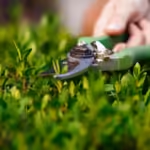Proper hand protection is crucial for ensuring patient and staff safety. As a medical accessories manufacturer to hospitals and medical facilities, it’s important to understand the various glove types used in clinical settings.
The market offers a range of options offering specific benefits and is suited for different medical applications.
Understanding these distinctions is important for healthcare professionals. This is to make informed decisions that balance cost-effectiveness with staff and patient safety.
This article will explain the various categories of medical gloves in detail as well as their usage.
Different Types of Gloves
Not all protective gloves are created equal and knowing how to choose the right ones for the right job is the first. You need to connect with the right medical examination gloves exporter. Learn about various types of personal protective equipment for the hands.
- Latex Gloves
The primary function of latex gloves is to protect hands against blood-borne pathogens and chemicals. They are very tactile. So some professionals in high-precision careers like surgeons wear latex gloves.
These are produced from rubber tree sap and have been a staple in the medical field and other industries for decades.
Best Usage:
- Dental
- childcare and eldercare
- Food service
- Beauty
- Even in some automotive and manufacturing situations.
- Nitrile Gloves
Unlike latex, these gloves are produced from synthetic rubber. It is stronger and more puncture-resistant than latex. These gloves are often more cost-friendly and reduce the risk of allergic reactions.
Many professionals in scientific and healthcare environemnt wear them. Also, many tattoo artists and auto mechanics use these in their profession,
Best Usage
- scientific and healthcare settings
- tattoo artists
- auto mechanics.
- PPE option for a general-purpose
- Vinyl Gloves
These gloves are made from PVC added with extra flexibility. The main advantage of these gloves is they are low-cost. This feature makes them a popular choice for conditions where gloves are changed frequently and discarded.
Best Usage
- Foodservice
- Housekeeping
- Certain medical procedures.
This option is also a good choice for those who want to avoid contact with allergens. If you need a simple and lightweight glove this is a top pick for professionals.
Other Types of Medical and Safety Gloves
Apart from the above-mentioned gloves you have some other globe options you might want. It can be beneficial to have a range of glove options easily accessible. Here are some other gloves to consider:
- Polyethylene Gloves
One of the most common plastics used today in examination gloves Exporters use this material to make gloves. These gloves offer excellent value at a low price, making them the best option for disposable gloves.
This type of PPE is losing fitting for quick and easy glove change and helps maintain a hygienic environment.
- Butyl Rubber Gloves
Butyl rubber is a type of synthetic rubber known for its strength and flexibility with a long shelf life. One of its most unique qualities is its ability to resist gases setting it apart from other materials.
Butyl rubber is resistant to
- Acids
- Alkalines
- Ozone
- hydraulic fluid
- Ketones.
The trade-off for the superior protection they provide is that they are
- thick and bulky
- limit touch sensitivity
- are not suitable for precision work.
- PVC Gloves
PVC is commonly used in cost-effective applications where exposure to dangerous substances is not a concern. PVC gloves can resist
- Alcohols
- Salts
- Water solutions.
This material is often employed in scientific and medical settings. They are frequently utilized as disposable vinyl gloves due to their affordability.
On the other hand, PVA gloves are designed for specialized applications making them more expensive. They demonstrate high resistance and inertness to strong solvents and chemicals.
These gloves are typically used in
- Scientific
- Industrial
- Laboratory environments.
- Clothes Gloves
One of the most commonly used plastics in the production of examination gloves is latex. Manufacturers use this material to produce gloves that provide excellent value at a low cost, making them ideal for single-use purposes. These gloves can safeguard against minor temperature changes like people in refrigerated warehouses.
Cloth gloves cannot prevent cuts or puncture wounds and must do little to keep chemicals or other liquids away from the hands.
- Leather Gloves
A quality pair of leather gloves can last many years with proper care. Leather depending on its thickness can be highly prevent cuts and punctures.
It is comfortable and conforms to the shape of the hand allowing for freedom of movement. It also offers protection from the elements and even a slight degree of chemical resistance.
But without proper attention, leather can become dry and cracked. These also can be prone to heat damage.
Wrapping Up
The diverse range of medical gloves from medical accessories manufacturer available today reflects the complex needs of modern healthcare environments. The right glove choice can significantly impact infection control, user comfort, and overall healthcare delivery efficiency.
As medical technology and practices continue to evolve so too will the demands on protective equipment. Staying informed about the latest developments in glove technology and industry standards is important for businesses operating in the medical supply chain.
Medical accessories manufacturers play a vital role in supporting the healthcare industry’s mission of delivering safe, effective patient care by providing healthcare facilities with the most appropriate glove solutions.










